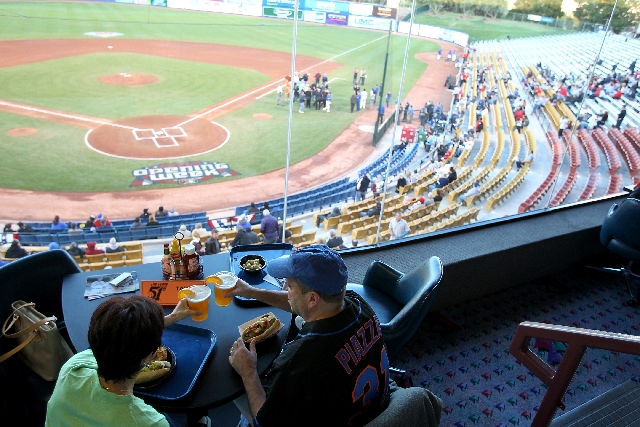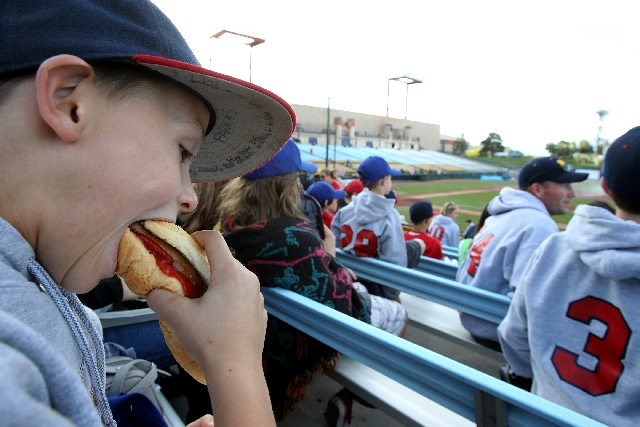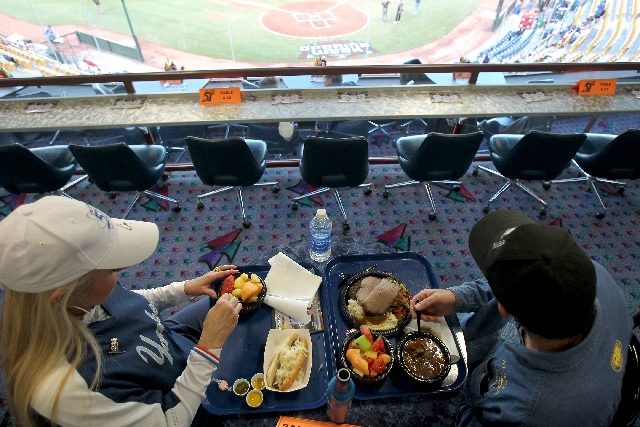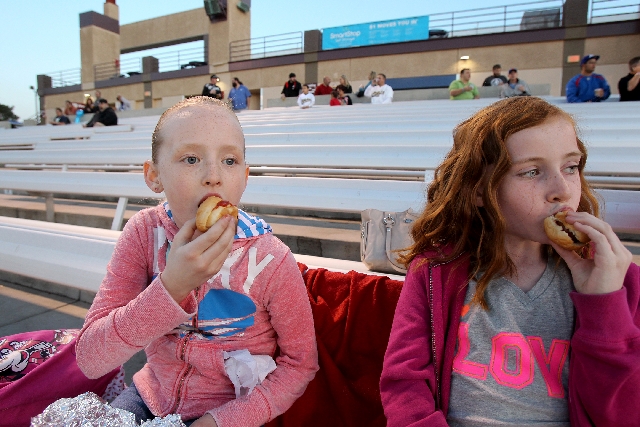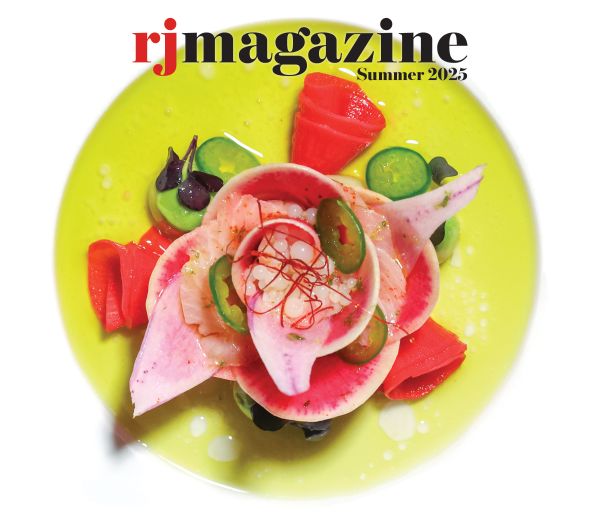Food service at Cashman Field has two strikes against it
Gradually over the past decade or so, the food offered at sports stadiums across the country has become increasingly sophisticated, in tune with changing American tastes.
Go to a baseball game at Fenway Park in Boston and you can get a lobster roll or New England clam chowder. If you attend a Marlins game in Miami — where the stadium’s website trumpets “The Culinary Experience” — you can have a Cuban sandwich, a knish or blackened mahi mahi. Angel Stadium in Anaheim, Calif., is ready to serve you a Monte Cristo panini or a fish taco platter.
Yeah, you can’t get any of those if you go to a Las Vegas 51s game at Cashman Field.
But let’s be fair, those are all major league parks, and the 51s are a minor league team. So we turned to Matt LaWell of Lakewood, Ohio, who, with his wife, Carolyn, last year took in a game at each of the 120 minor league ballparks in the country.
LaWell actually doesn’t remember the food at Cashman Field, not necessarily because it’s so forgettable but because it was a morning game in the middle of their foray of nearly 30,000 miles. But it may be telling that he remembers the highlights of the fare offered in other cities.
For example, at the Charlotte Sports Park in Port Charlotte, Fla. — home of the Charlotte Stone Crabs — the Stoney Dog is a 10-inch hot dog with four strips of bacon, Carolina pulled pork and onion straws, on a bun delivered fresh daily from a local Italian bakery.
“The bun breaks a hot dog if it’s crappy,” LaWell said.
Or the Fifth Third Ballpark of the West Michigan Whitecaps in Comstock Park, Mich., whose Fifth Third Burger has five third-pound patties topped with cheese, nacho cheese sauce, chili, lettuce, tomato, salsa, sour cream and tortilla chips — and a T-shirt and photo in the hall of fame if you finish it.
“It took me three to four innings to eat it,” LaWell recalled.
Or Pohlman Field in Beloit, Wis., home of the Beloit Snappers, which offers fried cheese curds.
You won’t get any of those things at Cashman Field, either.
What can you get there?
Hebrew National hot dogs, burgers, soft pretzels, nachos, popcorn, peanuts and Cracker Jack, for the most part, and Gordon Biersch garlic fries that stand out in the crowd. If you’re looking for healthier choices, there’s a fruit cup, veggie sticks, wraps or a Caesar salad. (An example of prices: $4 for a hot dog, $3 for a soft pretzel, $5 for a Caesar salad — not bad, by stadium standards.)
Local food? Heck, there’s not even any real local color. The hot dogs include a Chicago dog that doesn’t have the right stuff and the mysteriously named Mountaineer, with chili, cole slaw and diced onion. About the only thing Las Vegas-y is the upper-floor Club Level Restaurant, which offers a small but serviceable buffet.
“If we have a high-end area, it’s that,” said Don Logan, Las Vegas 51s executive vice president.
Las Vegas has become known as one of the best restaurant destinations in the country, if not the world. So how come Cashman Field is still a hot dog-and-beer kind of place?
Mainly, Logan said, because of the limitations of the facility itself.
“This thing was designed back in 1981,” he said, when hot dogs and beer were pretty much the norm. “There’s one kitchen, which is way down on the lower level in the right-field corner. They cook the food down there, and then they have to put it on these big rolling carts and roll it up and take it to the concession stands.”
The concession stands off the first- and third-base lines have grills, he said, for burgers and deep-fried foods such as fries and corn dogs.
The food for the buffet is prepared in the small central kitchen, Logan said.
“There’s a soup and salad bar, and they will have, typically, two types of entrees,” he said. “They’ll theme it, too, one night might be Mexican night. There’s always a carving station. The other night they had flank steak with fajitas.”
The buffet typically draws 250 people a night, he said; average stadium attendance is 5,000.
Stand-alone kiosks supplement Cashman Field’s offerings with such things as sliders, Ben & Jerry’s ice cream, shaved ice and glazed nuts. Logan said stadium food-service provider Aramark is able to serve the Gordon Biersch garlic fries in an arrangement with the company, but he said other agreements are lost because of the lack of space and equipment.
“If we had the right kind of place, we could do California Pizza Kitchen,” Logan said. “But they won’t let us serve their pizza here because we’ve got some cruddy old pizza oven that doesn’t do it right.”
Stadiums that were built more recently, he said, are able to offer food in greater variety.
“At the newer stadiums, they have sushi and good, healthy-type stuff,” Logan said. “We can’t mess with that here. That’s a lawsuit waiting to happen. It’s just too tough here, with limited refrigeration space and the size of the kitchen.”
A newer example that’s close to home, he said, is Aces Ballpark, home of the Reno Aces.
“The kitchens are right off the concession stands, so they can do a lot more varied stuff,” he said. “It’s more fresh. I think freshness is a big part of what people today have gotten accustomed to.”
A new 51s stadium — wherever it may be — would offer such opportunities, Logan said.
“It’ll be state of the art,” he said. “It’ll have the ability to do a lot more and do it better.”
In the meantime, he said, a hot dog and a drink is the most popular stadium meal.
But LaWell sees other possibilities.
“Sometimes,” he said, “the best food was in the little places you stumble onto just outside of the parks.”
Sounds like the Neon Museum might want to step up its game.
Contact reporter Heidi Knapp Rinella at
hrinella@reviewjournal.com or 702-383-0474.



